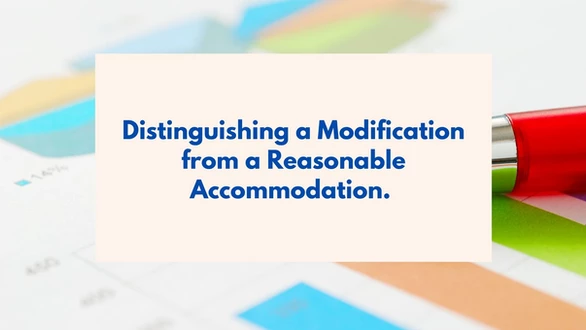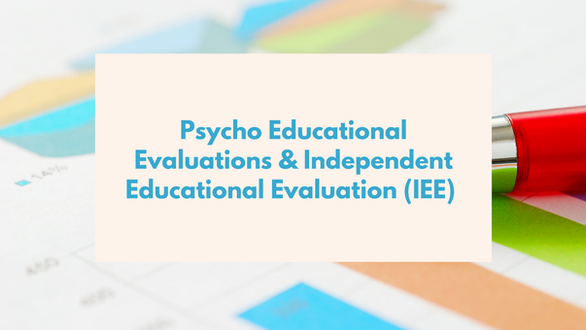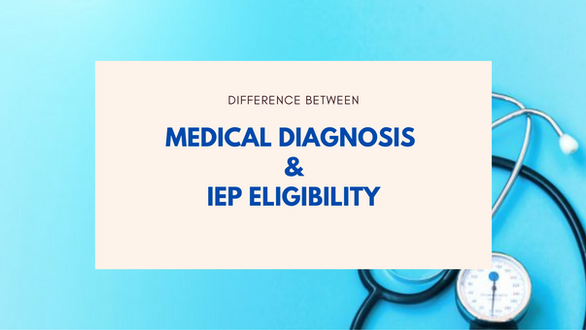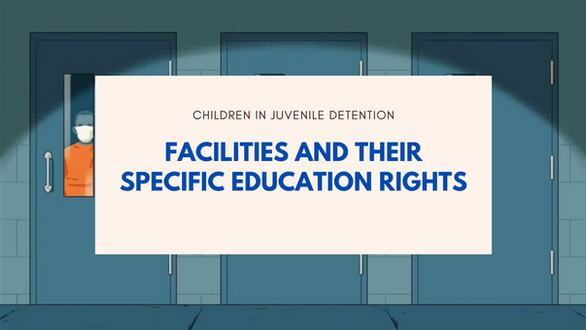INTRODUCTION
Children may be diagnosed with a disability by a medical provider or by the school district. However, one must understand that being simply diagnosed with a disability is not a guarantee of services under the Individuals with Disabilities Education Act (IDEA).
If your child has learning and attention issues—or if you suspect s/he does—you may be eager for her to receive special education services. To find out if s/he’s eligible, school officials have to do two things. First, they must determine if your child has a “covered” disability. Second, they have to determine if it’s severe enough for him or her to need special education services.
The public school district handles both steps. They do this with input and permission from you.
Understanding Evaluations
Before a student can receive special education services, he or she must be evaluated for eligibility. Under IDEA, there are currently 13 categories under which a child can receive these services:
- Autism
- Deaf-blindness
- Deafness
- Emotional disturbance
- Hearing impairment
- Intellectual disability*
- Multiple disabilities
- Orthopedic impairment
- Other health impairment
- Specific learning disability
- Speech or language impairment
- Traumatic brain injury
- Visual impairment
Some conditions, such as ADHD, are not learning disabilities but can interfere with learning. Those conditions are usually diagnosed by a doctor or other outside expert, not the school. If this is your situation, you can show proof of your child’s diagnosis. However, the school will probably do its own evaluation to gather more information.
A team of professionals does the evaluation. This team usually includes the school psychologist and other educators. They give your child various tests and review her school records. They also observe her in the classroom.
When the evaluation is complete, the evaluator will write a report. It will include scores, a summary of findings and recommendations for how to help your child. You’ll meet with the team to go over the results. The evaluation gives you and the school insight into your child’s challenges, strengths and needs.
A key finding will be whether your child has one or more of the disabilities listed among the 13 disability categories in IDEA. One of these categories, “specific learning disability,” applies to many kids with learning and attention issues.
If your child has a condition other than the disabilities listed, but that condition makes learning difficult, it may be covered under the “other health impairment” category of IDEA.
If the evaluation shows your child has a disability that could make him or her eligible for special education, you’ll move on to the next step which is usually The Eligibility Determination.
The Eligibility Determination
If the evaluation shows that your child has a disability, the next step is for the school to determine whether she needs special education services. They’ll make this decision based on their evaluation of your child.
If the school determines your child needs services, the next step is to create an Individualized Education Program (IEP).
However, even if your child has a “covered” disability, s/he still might not be eligible. The school may determine that the disability doesn’t keep him or her from learning adequately in the general education classroom. In that case, it won’t provide special education services.
MEANS FOR DETERMINING WHETHER A CHILD IS ELIGIBLE FOR AN IEP AFTER AN EVALUATION
One factor many parents new to the Special Education system do not know is that the model used to identify students with disabilities may affect whether their child qualifies for services. There are three basic models of identification: the Discrepancy Model, the Response to Intervention Model, and the Patterns of Strengths and Weaknesses Model. Current Federal law favors the Response to Intervention Model, but the Patterns of Strengths and Weaknesses Model is growing in popularity, and for good reason. Let’s quickly look at these models for determining whether a child is eligible for an iep after an evaluation
What the Discrepancy Model Is
The discrepancy model is a way to capture and compare a student’s scores on different types of tests. It compares assessments of a child’s intellectual ability (IQ) with how much progress he’s making in school (his academic achievement).
In some cases, there may be a significant “discrepancy” (difference) between various sets of scores. The idea is that when there’s a difference like this, it’s evidence that an underlying condition is making it unusually hard for a child to learn.
For example, say your fifth grader’s IQ falls in the average range. The expectation would be for him to be reading at a typical fifth-grade level. But say his scores show that he’s actually reading at a second-grade level. In that case, there’s a discrepancy between what the IQ test said he’s capable of (ability) and his actual reading level (achievement).
How the Discrepancy Model Is Used
The Discrepancy Model compares a student’s full scale IQ score to diagnostic academic test scores. If the diagnostic academic test scores come in lower than the IQ score by a predetermined number (15 points to 22 points is frequently the norm), then the student is considered eligible for services.
The discrepancy model was part of the Individuals with Disabilities in Education Act (IDEA) when it became law in 1975. It was created so that schools would have a way to figure out which students were eligible for special education.
For decades, schools were required to use the discrepancy model. But in 2004, when IDEA was reauthorized, that changed. The law now says that states can use the discrepancy model if they choose. However, it allows them to use other models instead of or along with the discrepancy model.
THE RESPONSE TO INTERVENTION MODEL
The Response to Intervention model focuses on student performance. If the student does not perform at a set level, then he or she is placed in an intervention group. If the student does not respond to this second-tier intervention after a particular period of time (typically six weeks), then they are either referred for diagnostic assessment or for more intensive intervention. The model itself is an excellent implementation model for intervention, but it has its challenges with regard to identification, especially for students who are already identified with learning disabilities.
HOW THE RESPONSE TO INTERVENTION MODEL IS USED
Response to Intervention (RTI) is a multi-tier approach to the early identification and support of students with learning and behavior needs. The RTI process begins with high-quality instruction and universal screening of all children in the general education classroom. Struggling learners are provided with interventions at increasing levels of intensity to accelerate their rate of learning. These services may be provided by a variety of personnel, including general education teachers, special educators, and specialists. Progress is closely monitored to assess both the learning rate and level of performance of individual students. Educational decisions about the intensity and duration of interventions are based on individual student response to instruction. RTI is designed for use when making decisions in both general education and special education, creating a well-integrated system of instruction and intervention guided by child outcome data.
THE PATTERNS OF STRENGTHS AND WEAKNESSES MODEL
The Patterns of Strengths and Weaknesses model generally uses a cognitive evaluation (most frequently the Woodcock Johnson III Tests of Cognition) which breaks out student performance into key areas, focusing on what the student already knows, processing speed, ability to reason, long term memory retrieval, short term memory, working memory, auditory processing, and phonemic awareness. To qualify, the student must show a set number of cognitive strengths (often three), plus at least one cognitive weakness. The student must then additionally show an associated academic weakness in an area which matches the cognitive weakness. The strength of the Patterns of Strengths and Weaknesses model is that it gives those designing interventions for the student the ability to identify specific cognitive areas of weakness. Say, for example, that a student exhibits problems with short term memory (a rather frequent situation with students identified with learning disabilities). Not only does that help the teachers create specific strategies to deal with that issue, but it also helps parents to understand why Johnny or Janie can’t remember detailed chore instructions. If the child frustrates easily at school and at home, and the scores are low in the area of processing speed, then both parents and school can allow the child more time to process information before expecting a response. Knowing about the Patterns of Strengths and Weaknesses model not only gives parents a tool for understanding why Shawn or Latisha aren’t doing well in school, but also helps them understand why their child behaves the way they do in other settings. It gives parents the ability to understand their child in deeper, non-academic ways. It is a tool with a great deal of potential, not just in school and at home.











